A good salad dressing makes or breaks a salad. Whether you want to learn how to make vinaigrettes, creamy dressings or vegan salad dressings, you're sure to find the answer in this guide!

What you'll find in this guide
- Common salad dressing ingredients
- The ratio to make perfect vinaigrettes without a recipe
- My 5 go-to salad dressings
- My staple balsamic vinaigrette recipe
Common ingredients
Mayonnaise, vegan mayonnaise or Greek yogurt and plain yogurt are common bases in creamy dressings. These are all generally interchangeable in equal amounts.
Extra virgin olive oil, avocado oil and canola oil are common ingredients in oil-based dressings and are generally interchangeable in recipes.
Mustard, preferably Dijon or whole seed, helps emulsify dressings. It may seem odd, but I promise that this ingredient is worth it. The flavor is very subtle.
Fruit like strawberries, peaches and pears can be pureed into dressings to add natural sweetness and body to dressings.
Salt & pepper: I like using coarse salt and freshly ground black pepper.
Lemon juice and lime juice add acidity and flavor. As a rule of thumb, one lime usually provides 2 tablespoons of lime juice and one medium lemon provides 3 tablespoons lemon juice.
How to make a vinaigrette
The most simple vinaigrettes are usually an equal ratio of oil to vinegar. Add 1 tablespoon of whole seed mustard to help with emulsification.
4 ounces vinegar + 4 ounces oil + 1 tablespoon whole seed mustard = 8 ounces vinaigrette
Oil options:
- Olive oil
- Avocado oil
- Canola oil
- Vegetable oil
- Sunflower or safflower oil
Vinegars:
- Balsamic vinegar
- Apple cider vinegar
- White wine vinegar
- Red wine vinegar
Sweeteners: Agave syrup, maple syrup and honey are common in salad dressings. Start with 1 teaspoon per 8 ounces and increase to taste.
Salt & pepper: Start with ¼ teaspoon coarse salt or sea salt and ⅛ teaspoon black pepper and increase to taste.
Spices/fresh herbs: Add 1-4 tablespoons fresh chopped herbs per 8 ounces vinaigrette. Try fresh rosemary, dill, parsley, cilantro, etc. Dry Italian seasoning is also a great addition.
Add ½ teaspoon red pepper flakes for a kick or ¼ teaspoon garlic powder for a garlicky dressing.
Five easy dressings
These are my staple dressings because they range from creamy to fruity and tangy. Click on the recipe title for the full link and recipe.
Tahini goddess dressing

This dressing is on repeat in my house because it's great for more than just salads. It's creamy, tangy and has no added sugar.
Drizzle it on sweet potato bowls and roasted veggies, use it as a dipping sauce or add it to a warm kale salad.
Strawberry vinaigrette

This recipe combines ½ cup of sliced strawberries with a simple balsamic vinaigrette for a sweet and tangy dressing. It adds a fruity touch to simple salads and can easily customized to have no added sugars.
You can easily swap canned peaches or pears for strawberries.
Dairy-free ranch dressing

This ranch is just like the store bought kind but free from added sugars and lower in sodium. It is perfect with veggies for a healthy snack and on Chef's salads.
Caesar dressing

As you might guess, this dressing is best on a caesar salad. You can add it to any kind of green salad. Toss it with spinach, kale and your favorite nuts, seeds and veggies for a simple but flavorful meal.
Chipotle lime ranch

This recipe is made with Greek yogurt to give an extra thick and creamy base. You can use an equal amount of vegan mayonnaise to make the recipe dairy-free.
This dressing is great on taco salads because it has a slightly spicy, Mexican-inspired flavor. It also goes well on bean burritos or as a dip with panko breaded tofu.
Salad Dressing FAQ
I like to store dressings in pint or quart sized ball jars but any kind of storage container will work. Keep them in the fridge for best quality.
Most dressings only last 4-5 days in the fridge because they don't have preservatives added like store bought dressings. Tahini dressings and vinegar based dressings keep for up to a week.
Storebought dressings often have added sugars and higher sodium than homemade dressings to help with flavor and shelf life. Making dressings at home is a great way to control the amount of sugar and salt in your dressings.
The type of oil you use depends on what kind of flavor profile you're going for. Olive oil, avocado oil and coconut oil provide robust flavor and are noticeable in dressings. For more neutral flavor, choose canola oil, vegetable oil, safflower or sunflower oil.
This is a general term for any oil used in salads. It usually refers to neutral or lightly flavored oils like canola, vegetable, or sunflower oil.
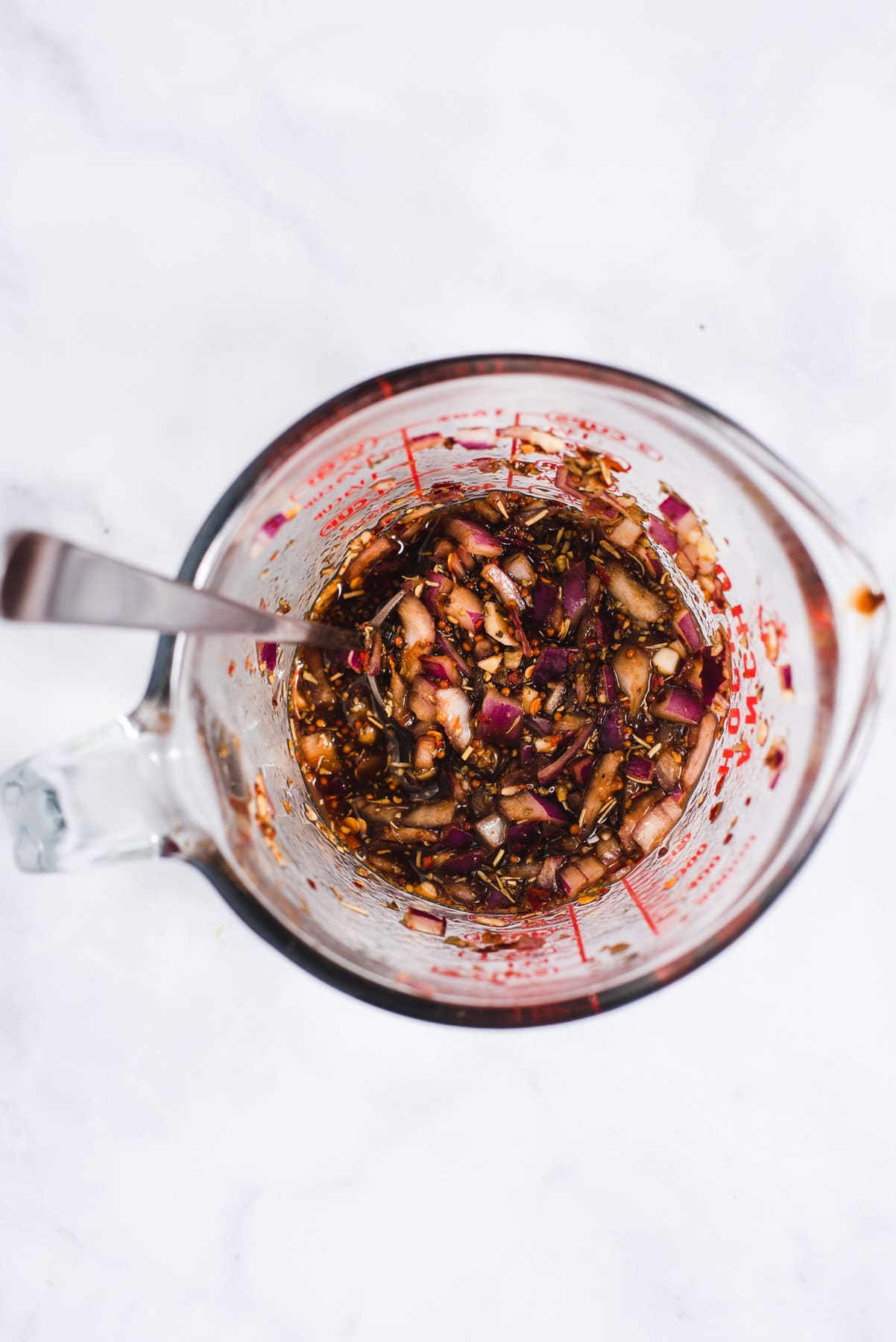
Looking for more salads?
📖 Recipe
Want to Save This Recipe?
Enter your email & I'll send it to your inbox. Plus, get great new recipes from me every week!
By submitting this form, you consent to receive emails from Cozy Peach Kitchen

Simple Balsamic Vinaigrette
Ingredients
- ¼ cup balsamic vinegar
- ¼ cup extra virgin olive oil
- 3 cloves minced garlic see note #1
- 1 tablespoon whole grain mustard see note #2
- 1 teaspoon Italian seasoning
- ½ teaspoon sea salt
- ½ teaspoon red pepper flakes optional
Instructions
- In a small bowl or glass measuring cup, whisk together balsamic vinegar, minced garlic, mustard, Italian seasoning, red pepper flakes and salt.
- Alternately, add all ingredients a pint sized ball jar. Place the lid on tightly and shake to combine. Taste for seasonings.
Video
Notes
- Garlic: Adjust amount to taste. ⅛ teaspoon garlic powder = 1 garlic clove.
- Mustard: Dijon mustard or whole seed mustard works best here. This helps with emulsification. The mustard flavor is very subtle.
- Storage: Store in a jar or closed container for up to one week. Stir or shake before using.



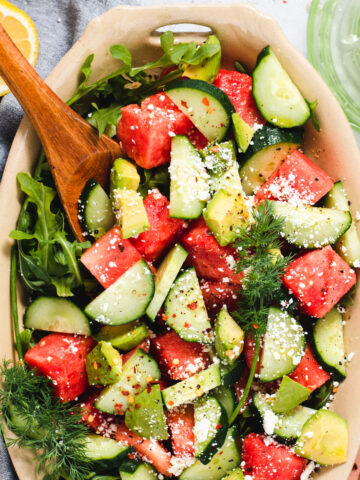
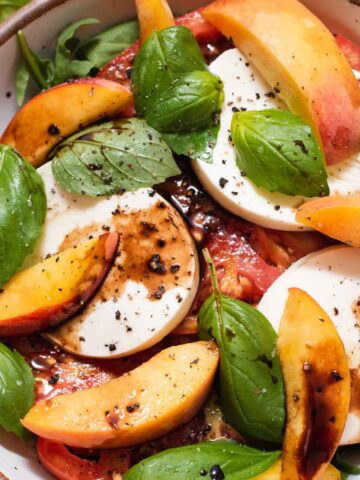
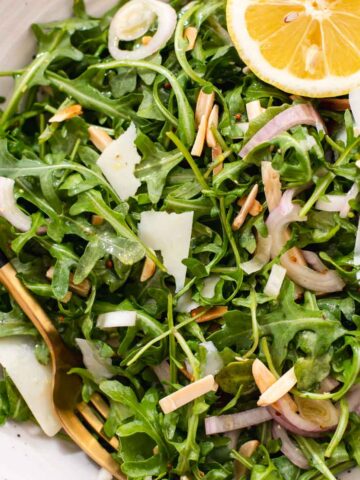
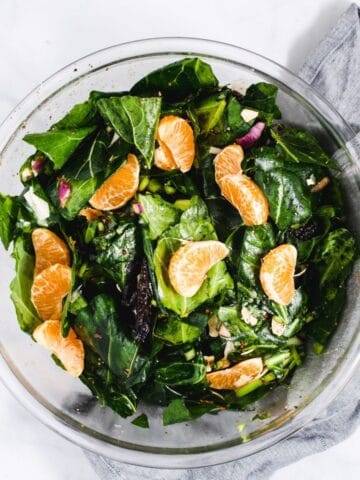
Comments
No Comments